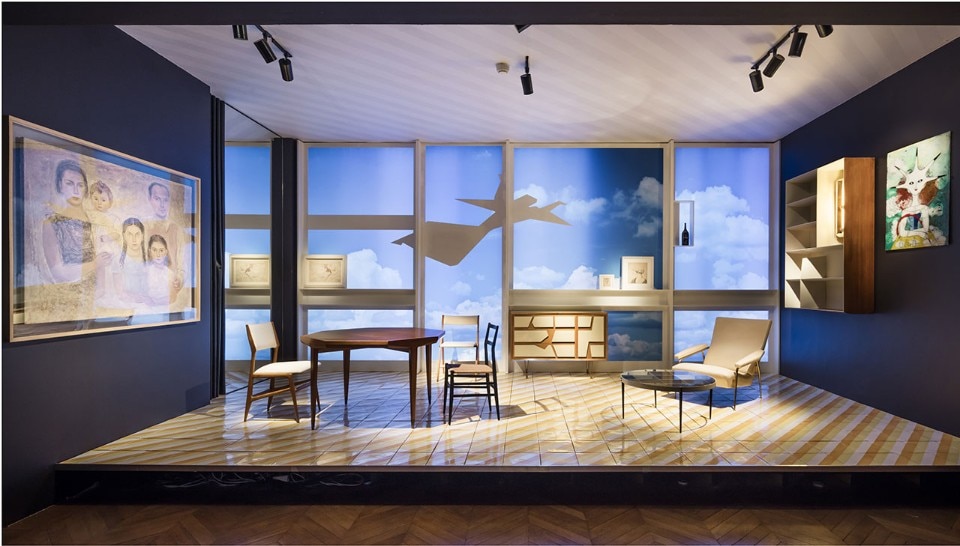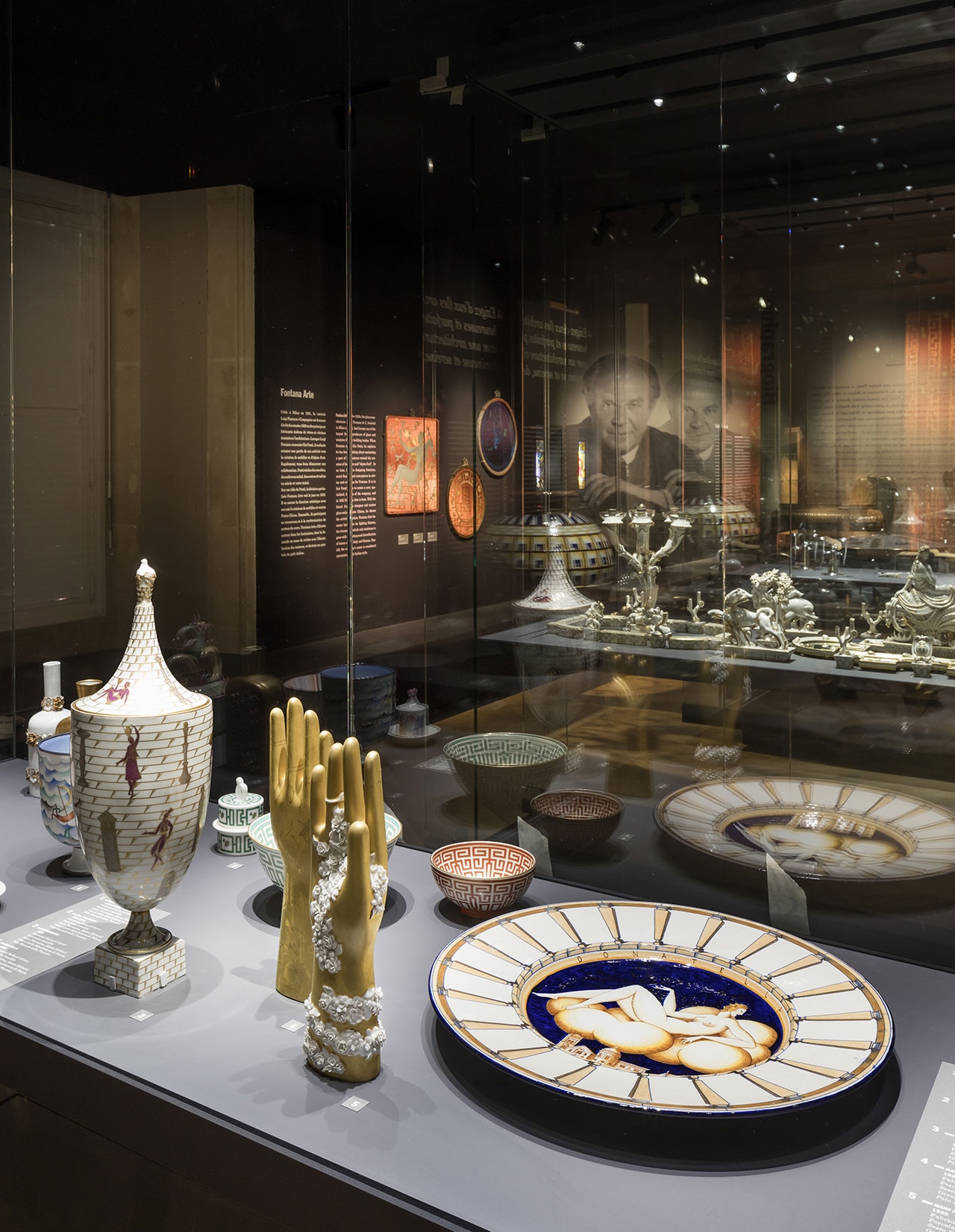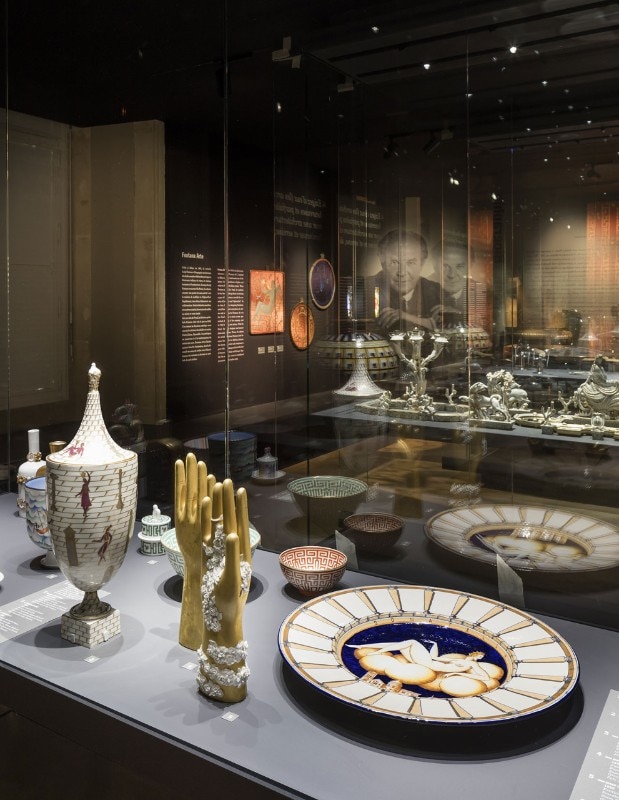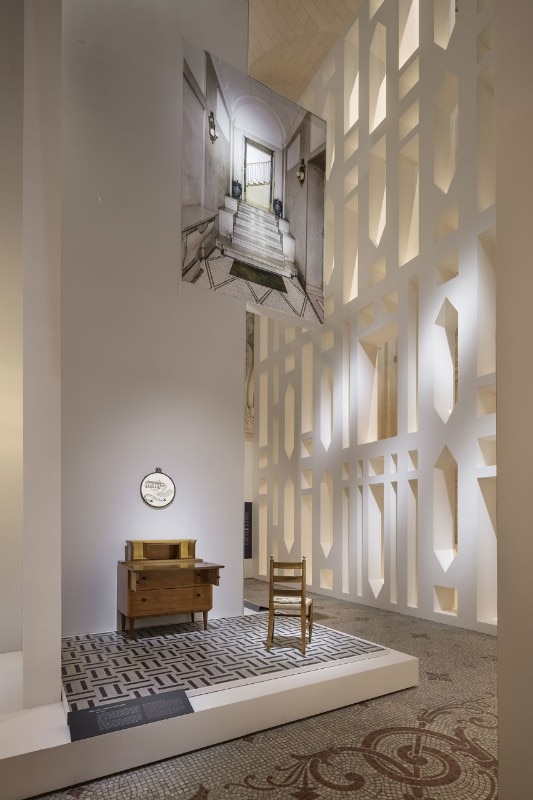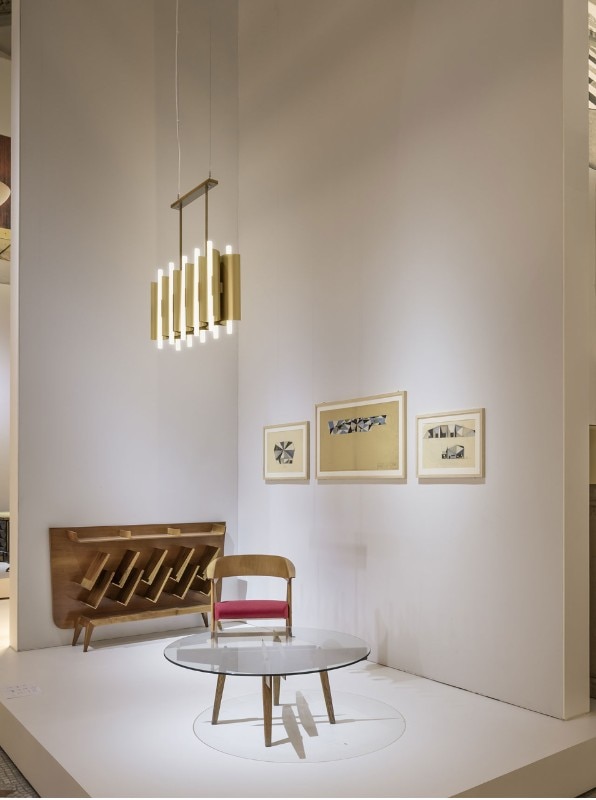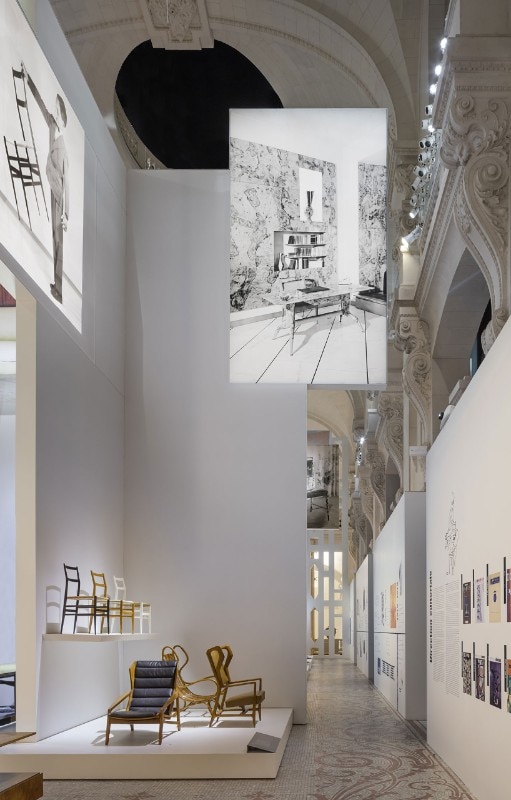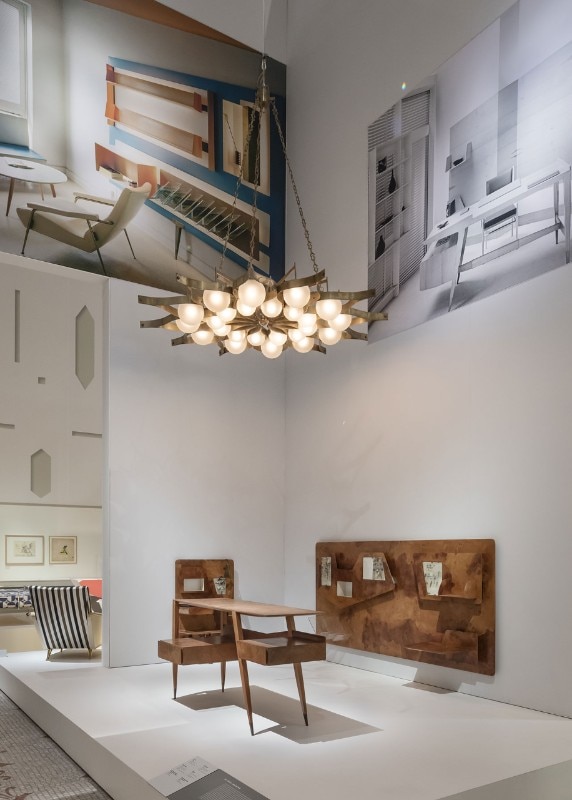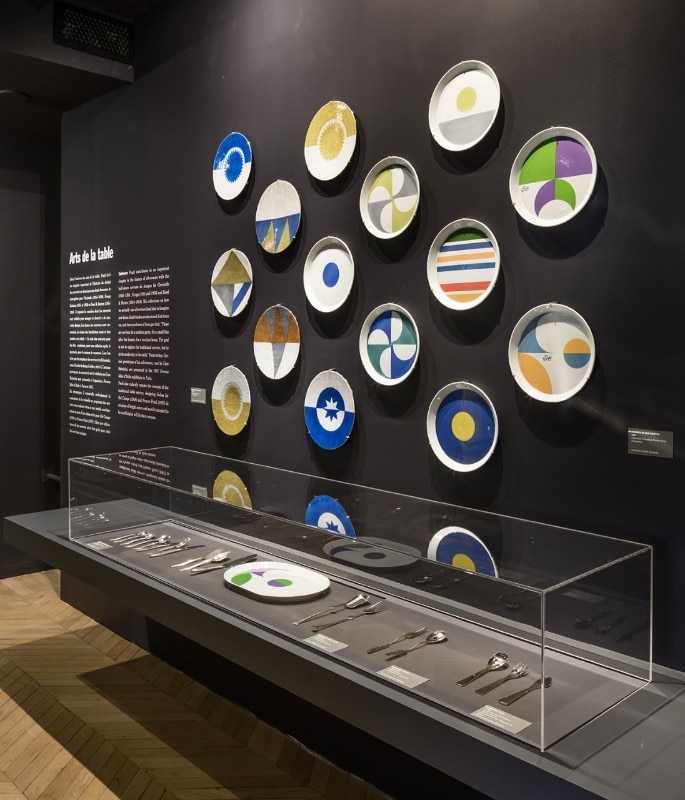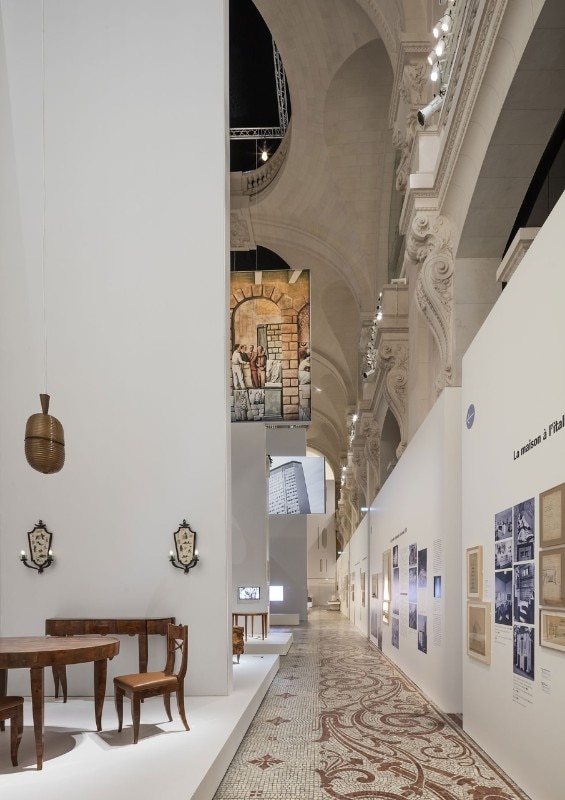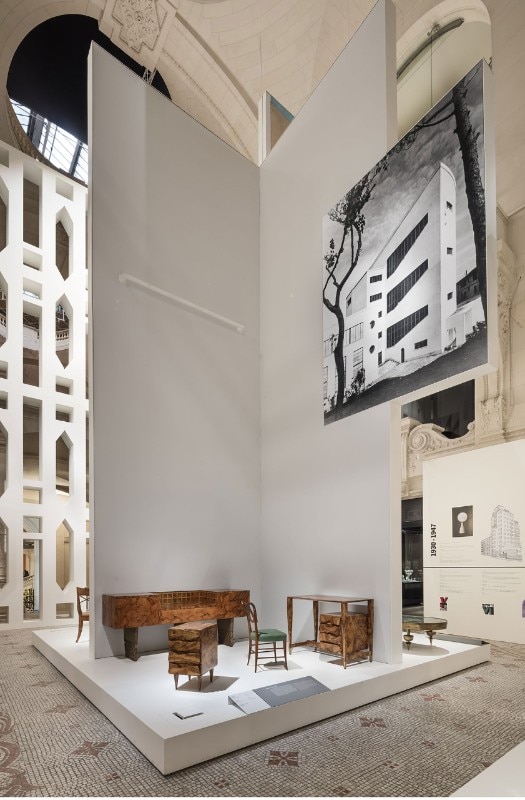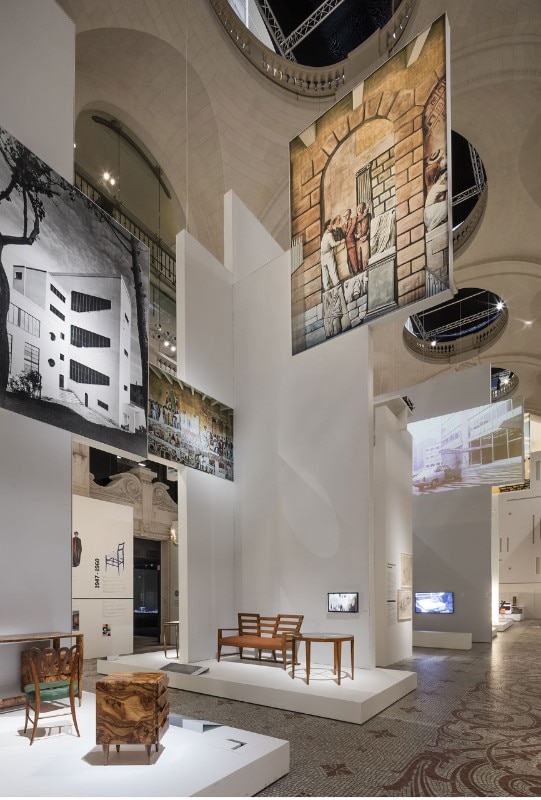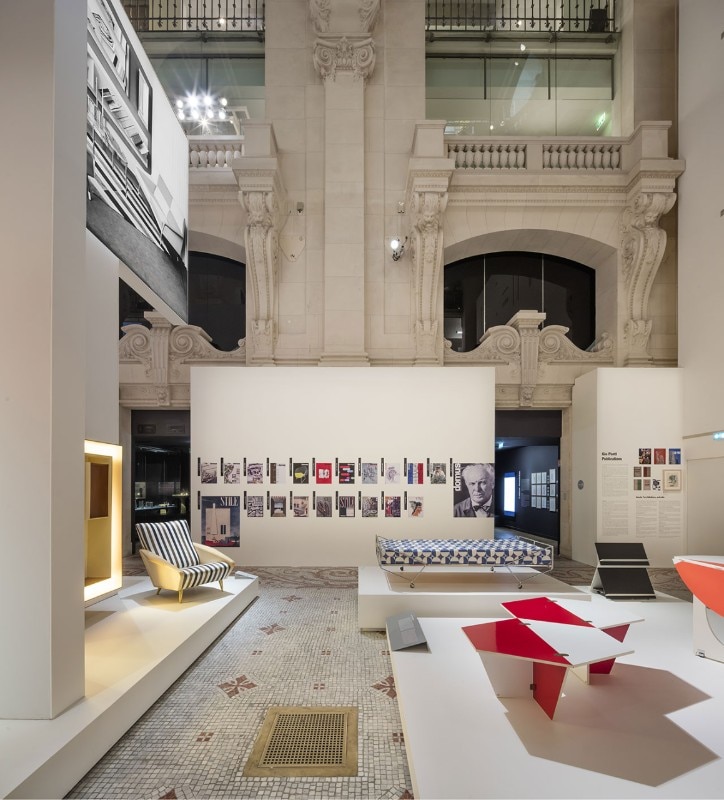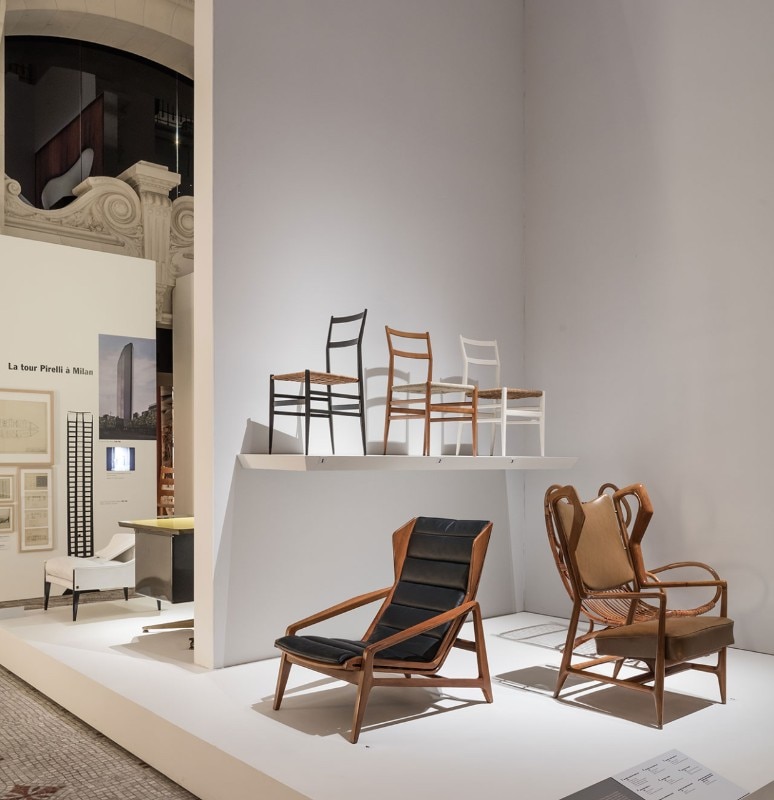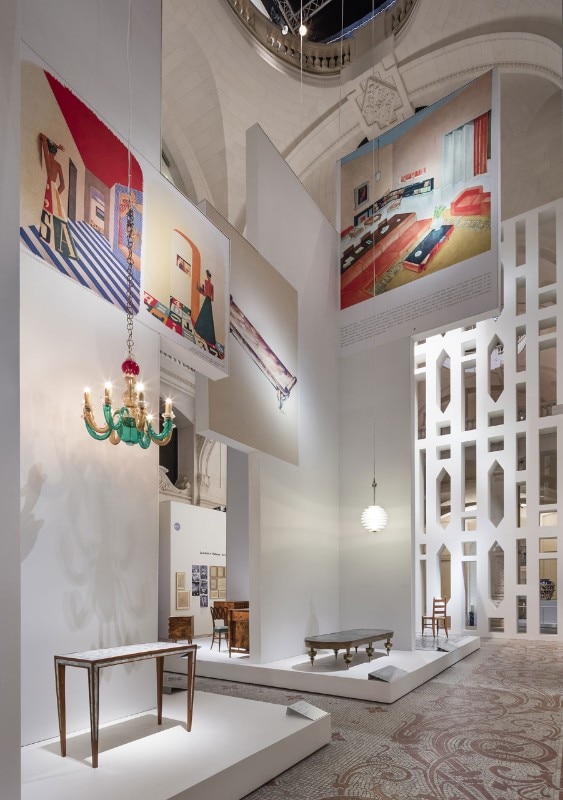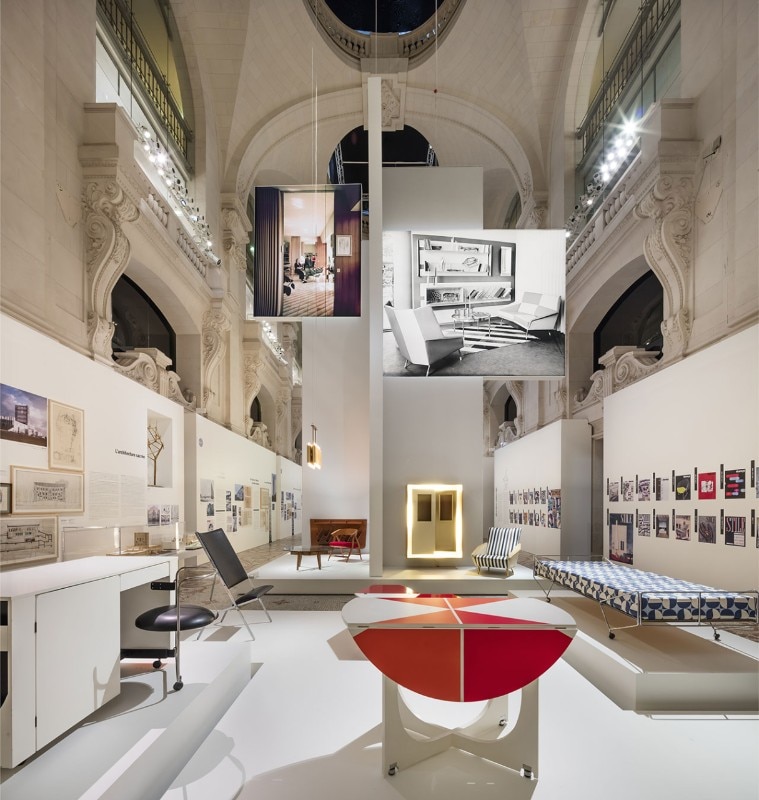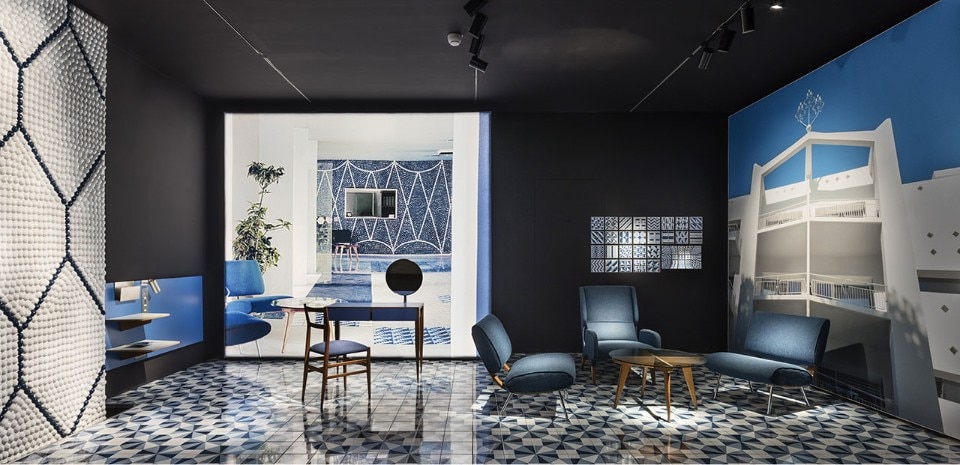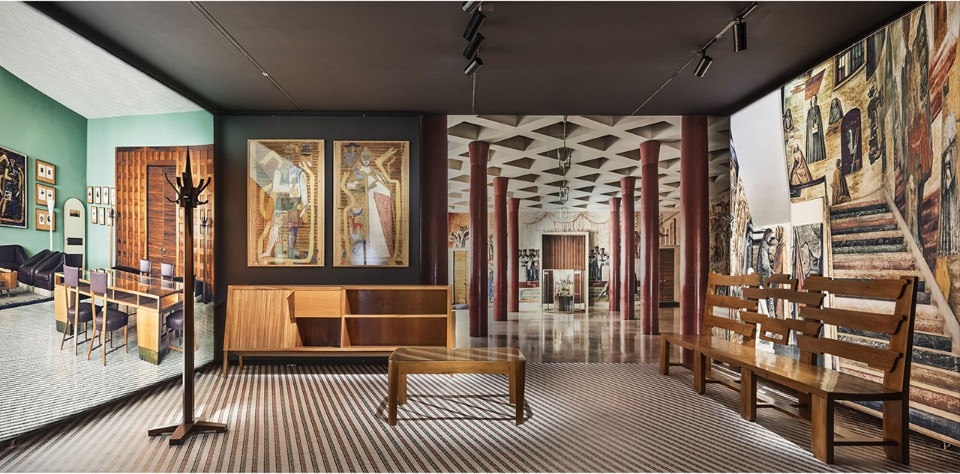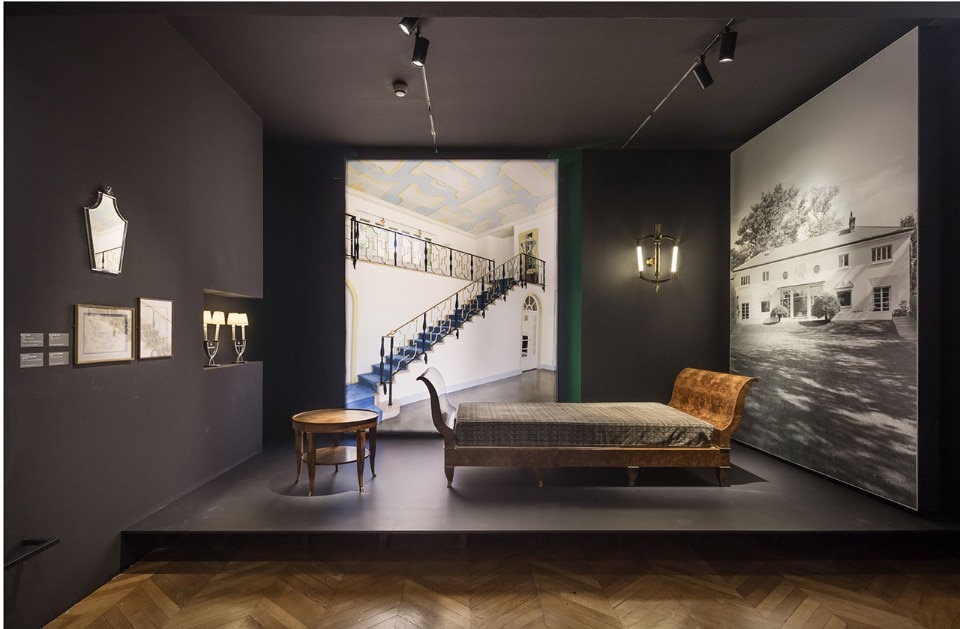“I agree with the decision to postpone the exhibition to October in order to have all the time necessary to do something extraordinary, because you don’t mess with Paris”. Thus, on 29 March 1978, Gio Ponti thanked Tony and Carla Bouilhett, who had proposed the creation of a grand exhibition of his work. However, Ponti died the following year, and the project was shelved.
Forty years later, Sophie Dumas, the granddaughter of Tony Bouilhett - for whom Ponti had designed the neo-Palladian Villa l’Ange Volant in Garches, just outside Paris – has picked up the project for the initiative.
Gio Ponti returns to the French capital with the exhibition “Gio Ponti Archidesigner”, curated by an Italo-French team, Sophie Dumas, Dominique Forest, the curator of the modern section of MAD, and Salvatore Licitra, custodian of the archives of Gio Ponti, and Chiara Spangaro, a researcher who dealt with Ponti’s work in an exhibition in Milan a few years ago.
It has taken three years of work, contacts with collectors from all over the world, and the collaboration of various archives in order to reconstruct Ponti’s universe, seeking to represent all of the areas that he worked in. It is impossible to cover the entire range of activity of such a multi-talented designer, but the exhibition gives an excellent presentation, in particular to the French public who have not had many opportunities for exhibitions on the Milanese architect, of his curiosity for all forms of artistic expression.
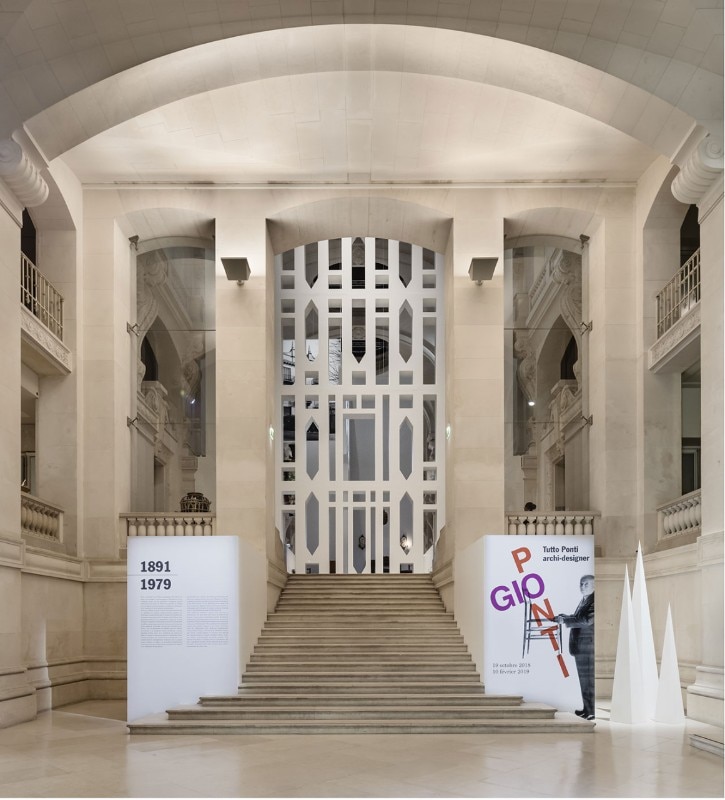
The firm Wilmotte & Associés has resolved the difficulties of fitting out the extremely high nave of the Louvre with a majestic and spectacular structure which neutrally divides the space and fills the upper areas of the building with images and videos of original environments by Ponti. At the entrance, the reconstruction of the façade of his co-cathedral in Taranto welcomes the visitor without immediately revealing the content of the exhibition.
On passing through the four sections – crafts, design, furniture and environmental reconstruction – one has the impression of leafing through the pages of the early issues of Domus: vases created for Richard Ginori, the advertising designed and published in the pages of the magazine, the coloured glass for Venini, the lights for FontanaArte, and the cutlery and teapots for Christofle.
There are also a number of aspects which are not usually exhibited in the many exhibitions on Ponti, such as his involvement in the group Il Labirinto, and his work for Domus Nova, an experience during which Ponti began to propose ideas for crafts and modern furnishing, in order to encourage buyers to create their own personal taste within the domestic environment and avoid imitating tradition, something which Ponti took a stand against from his very first columns for Domus.
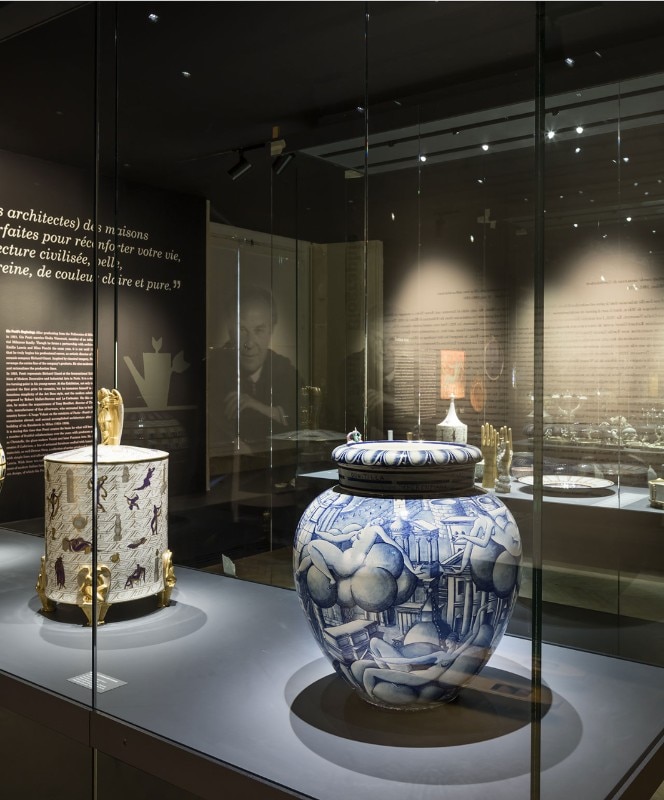
In the main nave, a number of items of furniture from international collections present his continuously-changing style, from the table in dark marble designed in the 1930s for the Contini Bonacossi family to the furniture created in the 1970s for Casa Adatta, when Ponti, in his eighties, imagined furniture on wheels which was light, customisable and adaptable to the new requirements of domestic life.
The exhibition concludes with the representation of some of the most characteristic interiors designed by the architect: the offices for Palazzo Montecatini, the living room of the home in Via Dezza with the family portrait by Massimo Campigli, and Villa Planchart in Caracas.
A substantial display of archive material explains the design stage of Ponti’s work and his personality. His poetic correspondence with friends from around the world, as well as drawings of boat interiors from the 1940s, and sketches for Christofle silverware. Olivier Gabet, the director of MAD, in the introduction of the catalogue which accompanies the exhibition, compares Ponti to an Italian Renaissance figure for his tireless and all-encompassing creative approach.
How did the exhibition come about and how did you create “Gio Ponti Archidesigner”?
I have been thinking about this exhibition for almost ten years. I began by frenetically reading Domus, which engaged me immediately. Ponti is an incredible character. The research stage was long, but in some way, Paris owed Ponti this exhibition, which my grandparents had proposed to him in 1978. I listened to their accounts and I understood that Ponti’s story deserved to be presented to Paris, which he considered his second home.
What role did the archives play in the creation of this project?
Their role was essential, first and foremost the Domus online archive, which served as my base. I spent years reading the articles written by Ponti, and thanks to Domus I was able to study how he spoke about his designs, how he presented them to his audience.
The CSAC in Parma was also very willing to open the doors to its archives, allowing us to also exhibit material which had never been shown before, as was the case with the Doccia Musuem of ceramics, which was very collaborative. Thus we were able to create three displays dedicated to his work for Richard Ginori.
The Christofle Musuem in Rouen, which is unfortunately not open to the public, has a huge collection, and was fundamental with regards to Ponti’s work at the end of the 1920s.
What led to your decision to present Ponti’s publishing work?
The magazines created and directed by Ponti were many, and they have very interesting stories. Ponti loved to share his thoughts, he wrote more than 1,000 pieces for the Corriere della Sera, for Domus and for Stile.
Together with Italo Lupi, who was responsible for the graphics for the exhibition, the decision was made to present his publishing activity on the walls of the nave through the reproduction of cover images, which bear witness to his unbridled desire to experiment. We could have dedicated more room to this, but we ran the risk of focusing attention on only one aspect of his life, perhaps the most well-known.
What relationship did Ponti have with France?
Gio Ponti was a bridge between Italy and France, a country he considered his second home. Here, in 1925, he won an award for ceramics in the Great Exposition in Paris, which led to his becoming famous. He returned to Paris with another triumph in 1957 with the exhibition Formes Idées d’Italie at the Christofle Gallery, where he presented his work together with that of friends such as Fausto Melotti, Paolo De Poli and Lino Sabattini. Lastly, in 1973, the director of Domus was invited by MAD to celebrate the 45th anniversary of the magazine. 45 years later, it seemed only right to pay tribute to Ponti in the temple of Art in Rue de Rivoli.
- Exhibition Title:
- Tutto Ponti: Gio Ponti, Archi-Designer
- Museum:
- Musée des Arts Décoratifs (MAD)
- Opening dates:
- 19 October 2018 – 10 February 2019
- Curators:
- Dominique Forest, Sophie Bouilhet-Dumas, Salvatore Licitra, Chiara Spangaro
- Indirizzo:
- 107 rue de Rivoli, Paris


